///////////////////////////////////////////////////////////////////////////////////////
//Terms of use
///////////////////////////////////////////////////////////////////////////////////////
//THE SOFTWARE IS PROVIDED "AS IS", WITHOUT WARRANTY OF ANY KIND, EXPRESS OR
//IMPLIED, INCLUDING BUT NOT LIMITED TO THE WARRANTIES OF MERCHANTABILITY,
//FITNESS FOR A PARTICULAR PURPOSE AND NONINFRINGEMENT. IN NO EVENT SHALL THE
//AUTHORS OR COPYRIGHT HOLDERS BE LIABLE FOR ANY CLAIM, DAMAGES OR OTHER
//LIABILITY, WHETHER IN AN ACTION OF CONTRACT, TORT OR OTHERWISE, ARISING FROM,
//OUT OF OR IN CONNECTION WITH THE SOFTWARE OR THE USE OR OTHER DEALINGS IN
//THE SOFTWARE.
///////////////////////////////////////////////////////////////////////////////////////
//Safety note
///////////////////////////////////////////////////////////////////////////////////////
//Always remove the propellers and stay away from the motors unless you
//are 100% certain of what you are doing.
///////////////////////////////////////////////////////////////////////////////////////
#include <Wire.h> //Include the Wire.h library so we can communicate with the gyro
#include <EEPROM.h> //Include the EEPROM.h library so we can store information onto the EEPROM
//Declaring Global Variables
byte last_channel_1, last_channel_2, last_channel_3, last_channel_4;
byte lowByte, highByte, type, gyro_address, error, clockspeed_ok;
byte channel_1_assign, channel_2_assign, channel_3_assign, channel_4_assign;
byte roll_axis, pitch_axis, yaw_axis;
byte receiver_check_byte, gyro_check_byte;
volatile int receiver_input_channel_1, receiver_input_channel_2, receiver_input_channel_3, receiver_input_channel_4;
int center_channel_1, center_channel_2, center_channel_3, center_channel_4;
int high_channel_1, high_channel_2, high_channel_3, high_channel_4;
int low_channel_1, low_channel_2, low_channel_3, low_channel_4;
int address, cal_int;
unsigned long timer, timer_1, timer_2, timer_3, timer_4, current_time;
float gyro_pitch, gyro_roll, gyro_yaw;
float gyro_roll_cal, gyro_pitch_cal, gyro_yaw_cal;
//Setup routine
void setup(){
pinMode(12, OUTPUT);
//Arduino (Atmega) pins default to inputs, so they don't need to be explicitly declared as inputs
PCICR |= (1 << PCIE0); // set PCIE0 to enable PCMSK0 scan
PCMSK0 |= (1 << PCINT0); // set PCINT0 (digital input 8) to trigger an interrupt on state change
PCMSK0 |= (1 << PCINT1); // set PCINT1 (digital input 9)to trigger an interrupt on state change
PCMSK0 |= (1 << PCINT2); // set PCINT2 (digital input 10)to trigger an interrupt on state change
PCMSK0 |= (1 << PCINT3); // set PCINT3 (digital input 11)to trigger an interrupt on state change
Wire.begin(); //Start the I2C as master
Serial.begin(57600); //Start the serial connetion @ 57600bps
delay(250); //Give the gyro time to start
}
//Main program
void loop(){
//Show the YMFC-3D V2 intro
intro();
Serial.println(F(""));
Serial.println(F("==================================================="));
Serial.println(F("System check"));
Serial.println(F("==================================================="));
delay(1000);
Serial.println(F("Checking I2C clock speed."));
delay(1000);
TWBR = 12; //Set the I2C clock speed to 400kHz.
#if F_CPU == 16000000L //If the clock speed is 16MHz include the next code line when compiling
clockspeed_ok = 1; //Set clockspeed_ok to 1
#endif //End of if statement
if(TWBR == 12 && clockspeed_ok){
Serial.println(F("I2C clock speed is correctly set to 400kHz."));
}
else{
Serial.println(F("I2C clock speed is not set to 400kHz. (ERROR 8)"));
error = 1;
}
if(error == 0){
Serial.println(F(""));
Serial.println(F("==================================================="));
Serial.println(F("Transmitter setup"));
Serial.println(F("==================================================="));
delay(1000);
Serial.print(F("Checking for valid receiver signals."));
//Wait 10 seconds until all receiver inputs are valid
wait_for_receiver();
Serial.println(F(""));
}
//Quit the program in case of an error
if(error == 0){
delay(2000);
Serial.println(F("Place all sticks and subtrims in the center position within 10 seconds."));
for(int i = 9;i > 0;i--){
delay(1000);
Serial.print(i);
Serial.print(" ");
}
Serial.println(" ");
//Store the central stick positions
center_channel_1 = receiver_input_channel_1;
center_channel_2 = receiver_input_channel_2;
center_channel_3 = receiver_input_channel_3;
center_channel_4 = receiver_input_channel_4;
Serial.println(F(""));
Serial.println(F("Center positions stored."));
Serial.print(F("Digital input 08 = "));
Serial.println(receiver_input_channel_1);
Serial.print(F("Digital input 09 = "));
Serial.println(receiver_input_channel_2);
Serial.print(F("Digital input 10 = "));
Serial.println(receiver_input_channel_3);
Serial.print(F("Digital input 11 = "));
Serial.println(receiver_input_channel_4);
Serial.println(F(""));
Serial.println(F(""));
}
if(error == 0){
Serial.println(F("Move the throttle stick to full throttle and back to center"));
//Check for throttle movement
check_receiver_inputs(1);
Serial.print(F("Throttle is connected to digital input "));
Serial.println((channel_3_assign & 0b00000111) + 7);
if(channel_3_assign & 0b10000000)Serial.println(F("Channel inverted = yes"));
else Serial.println(F("Channel inverted = no"));
wait_sticks_zero();
Serial.println(F(""));
Serial.println(F(""));
Serial.println(F("Move the roll stick to simulate left wing up and back to center"));
//Check for throttle movement
check_receiver_inputs(2);
Serial.print(F("Roll is connected to digital input "));
Serial.println((channel_1_assign & 0b00000111) + 7);
if(channel_1_assign & 0b10000000)Serial.println(F("Channel inverted = yes"));
else Serial.println(F("Channel inverted = no"));
wait_sticks_zero();
}
if(error == 0){
Serial.println(F(""));
Serial.println(F(""));
Serial.println(F("Move the pitch stick to simulate nose up and back to center"));
//Check for throttle movement
check_receiver_inputs(3);
Serial.print(F("Pitch is connected to digital input "));
Serial.println((channel_2_assign & 0b00000111) + 7);
if(channel_2_assign & 0b10000000)Serial.println(F("Channel inverted = yes"));
else Serial.println(F("Channel inverted = no"));
wait_sticks_zero();
}
if(error == 0){
Serial.println(F(""));
Serial.println(F(""));
Serial.println(F("Move the yaw stick to simulate nose right and back to center"));
//Check for throttle movement
check_receiver_inputs(4);
Serial.print(F("Yaw is connected to digital input "));
Serial.println((channel_4_assign & 0b00000111) + 7);
if(channel_4_assign & 0b10000000)Serial.println(F("Channel inverted = yes"));
else Serial.println(F("Channel inverted = no"));
wait_sticks_zero();
}
if(error == 0){
Serial.println(F(""));
Serial.println(F(""));
Serial.println(F("Gently move all the sticks simultaneously to their extends"));
Serial.println(F("When ready put the sticks back in their center positions"));
//Register the min and max values of the receiver channels
register_min_max();
Serial.println(F(""));
Serial.println(F(""));
Serial.println(F("High, low and center values found during setup"));
Serial.print(F("Digital input 08 values:"));
Serial.print(low_channel_1);
Serial.print(F(" - "));
Serial.print(center_channel_1);
Serial.print(F(" - "));
Serial.println(high_channel_1);
Serial.print(F("Digital input 09 values:"));
Serial.print(low_channel_2);
Serial.print(F(" - "));
Serial.print(center_channel_2);
Serial.print(F(" - "));
Serial.println(high_channel_2);
Serial.print(F("Digital input 10 values:"));
Serial.print(low_channel_3);
Serial.print(F(" - "));
Serial.print(center_channel_3);
Serial.print(F(" - "));
Serial.println(high_channel_3);
Serial.print(F("Digital input 11 values:"));
Serial.print(low_channel_4);
Serial.print(F(" - "));
Serial.print(center_channel_4);
Serial.print(F(" - "));
Serial.println(high_channel_4);
Serial.println(F("Move stick 'nose up' and back to center to continue"));
check_to_continue();
}
if(error == 0){
//What gyro is connected
Serial.println(F(""));
Serial.println(F("==================================================="));
Serial.println(F("Gyro search"));
Serial.println(F("==================================================="));
delay(2000);
Serial.println(F("Searching for MPU-6050 on address 0x68/104"));
delay(1000);
if(search_gyro(0x68, 0x75) == 0x68){
Serial.println(F("MPU-6050 found on address 0x68"));
type = 1;
gyro_address = 0x68;
}
if(type == 0){
Serial.println(F("Searching for MPU-6050 on address 0x69/105"));
delay(1000);
if(search_gyro(0x69, 0x75) == 0x68){
Serial.println(F("MPU-6050 found on address 0x69"));
type = 1;
gyro_address = 0x69;
}
}
if(type == 0){
Serial.println(F("Searching for L3G4200D on address 0x68/104"));
delay(1000);
if(search_gyro(0x68, 0x0F) == 0xD3){
Serial.println(F("L3G4200D found on address 0x68"));
type = 2;
gyro_address = 0x68;
}
}
if(type == 0){
Serial.println(F("Searching for L3G4200D on address 0x69/105"));
delay(1000);
if(search_gyro(0x69, 0x0F) == 0xD3){
Serial.println(F("L3G4200D found on address 0x69"));
type = 2;
gyro_address = 0x69;
}
}
if(type == 0){
Serial.println(F("Searching for L3GD20H on address 0x6A/106"));
delay(1000);
if(search_gyro(0x6A, 0x0F) == 0xD7){
Serial.println(F("L3GD20H found on address 0x6A"));
type = 3;
gyro_address = 0x6A;
}
}
if(type == 0){
Serial.println(F("Searching for L3GD20H on address 0x6B/107"));
delay(1000);
if(search_gyro(0x6B, 0x0F) == 0xD7){
Serial.println(F("L3GD20H found on address 0x6B"));
type = 3;
gyro_address = 0x6B;
}
}
if(type == 0){
Serial.println(F("No gyro device found!!! (ERROR 3)"));
error = 1;
}
else{
delay(3000);
Serial.println(F(""));
Serial.println(F("==================================================="));
Serial.println(F("Gyro register settings"));
Serial.println(F("==================================================="));
start_gyro(); //Setup the gyro for further use
}
}
//If the gyro is found we can setup the correct gyro axes.
if(error == 0){
delay(3000);
Serial.println(F(""));
Serial.println(F("==================================================="));
Serial.println(F("Gyro calibration"));
Serial.println(F("==================================================="));
Serial.println(F("Don't move the quadcopter!! Calibration starts in 3 seconds"));
delay(3000);
Serial.println(F("Calibrating the gyro, this will take +/- 8 seconds"));
Serial.print(F("Please wait"));
//Let's take multiple gyro data samples so we can determine the average gyro offset (calibration).
for (cal_int = 0; cal_int < 2000 ; cal_int ++){ //Take 2000 readings for calibration.
if(cal_int % 100 == 0)Serial.print(F(".")); //Print dot to indicate calibration.
gyro_signalen(); //Read the gyro output.
gyro_roll_cal += gyro_roll; //Ad roll value to gyro_roll_cal.
gyro_pitch_cal += gyro_pitch; //Ad pitch value to gyro_pitch_cal.
gyro_yaw_cal += gyro_yaw; //Ad yaw value to gyro_yaw_cal.
delay(4); //Wait 3 milliseconds before the next loop.
}
//Now that we have 2000 measures, we need to devide by 2000 to get the average gyro offset.
gyro_roll_cal /= 2000; //Divide the roll total by 2000.
gyro_pitch_cal /= 2000; //Divide the pitch total by 2000.
gyro_yaw_cal /= 2000; //Divide the yaw total by 2000.
//Show the calibration results
Serial.println(F(""));
Serial.print(F("Axis 1 offset="));
Serial.println(gyro_roll_cal);
Serial.print(F("Axis 2 offset="));
Serial.println(gyro_pitch_cal);
Serial.print(F("Axis 3 offset="));
Serial.println(gyro_yaw_cal);
Serial.println(F(""));
Serial.println(F("==================================================="));
Serial.println(F("Gyro axes configuration"));
Serial.println(F("==================================================="));
//Detect the left wing up movement
Serial.println(F("Lift the left side of the quadcopter to a 45 degree angle within 10 seconds"));
//Check axis movement
check_gyro_axes(1);
if(error == 0){
Serial.println(F("OK!"));
Serial.print(F("Angle detection = "));
Serial.println(roll_axis & 0b00000011);
if(roll_axis & 0b10000000)Serial.println(F("Axis inverted = yes"));
else Serial.println(F("Axis inverted = no"));
Serial.println(F("Put the quadcopter back in its original position"));
Serial.println(F("Move stick 'nose up' and back to center to continue"));
check_to_continue();
//Detect the nose up movement
Serial.println(F(""));
Serial.println(F(""));
Serial.println(F("Lift the nose of the quadcopter to a 45 degree angle within 10 seconds"));
//Check axis movement
check_gyro_axes(2);
}
if(error == 0){
Serial.println(F("OK!"));
Serial.print(F("Angle detection = "));
Serial.println(pitch_axis & 0b00000011);
if(pitch_axis & 0b10000000)Serial.println(F("Axis inverted = yes"));
else Serial.println(F("Axis inverted = no"));
Serial.println(F("Put the quadcopter back in its original position"));
Serial.println(F("Move stick 'nose up' and back to center to continue"));
check_to_continue();
//Detect the nose right movement
Serial.println(F(""));
Serial.println(F(""));
Serial.println(F("Rotate the nose of the quadcopter 45 degree to the right within 10 seconds"));
//Check axis movement
check_gyro_axes(3);
}
if(error == 0){
Serial.println(F("OK!"));
Serial.print(F("Angle detection = "));
Serial.println(yaw_axis & 0b00000011);
if(yaw_axis & 0b10000000)Serial.println(F("Axis inverted = yes"));
else Serial.println(F("Axis inverted = no"));
Serial.println(F("Put the quadcopter back in its original position"));
Serial.println(F("Move stick 'nose up' and back to center to continue"));
check_to_continue();
}
}
if(error == 0){
Serial.println(F(""));
Serial.println(F("==================================================="));
Serial.println(F("LED test"));
Serial.println(F("==================================================="));
digitalWrite(12, HIGH);
Serial.println(F("The LED should now be lit"));
Serial.println(F("Move stick 'nose up' and back to center to continue"));
check_to_continue();
digitalWrite(12, LOW);
}
Serial.println(F(""));
if(error == 0){
Serial.println(F("==================================================="));
Serial.println(F("Final setup check"));
Serial.println(F("==================================================="));
delay(1000);
if(receiver_check_byte == 0b00001111){
Serial.println(F("Receiver channels ok"));
}
else{
Serial.println(F("Receiver channel verification failed!!! (ERROR 6)"));
error = 1;
}
delay(1000);
if(gyro_check_byte == 0b00000111){
Serial.println(F("Gyro axes ok"));
}
else{
Serial.println(F("Gyro exes verification failed!!! (ERROR 7)"));
error = 1;
}
}
if(error == 0){
//If all is good, store the information in the EEPROM
Serial.println(F(""));
Serial.println(F("==================================================="));
Serial.println(F("Storing EEPROM information"));
Serial.println(F("==================================================="));
Serial.println(F("Writing EEPROM"));
delay(1000);
Serial.println(F("Done!"));
EEPROM.write(0, center_channel_1 & 0b11111111);
EEPROM.write(1, center_channel_1 >> 8);
EEPROM.write(2, center_channel_2 & 0b11111111);
EEPROM.write(3, center_channel_2 >> 8);
EEPROM.write(4, center_channel_3 & 0b11111111);
EEPROM.write(5, center_channel_3 >> 8);
EEPROM.write(6, center_channel_4 & 0b11111111);
EEPROM.write(7, center_channel_4 >> 8);
EEPROM.write(8, high_channel_1 & 0b11111111);
EEPROM.write(9, high_channel_1 >> 8);
EEPROM.write(10, high_channel_2 & 0b11111111);
EEPROM.write(11, high_channel_2 >> 8);
EEPROM.write(12, high_channel_3 & 0b11111111);
EEPROM.write(13, high_channel_3 >> 8);
EEPROM.write(14, high_channel_4 & 0b11111111);
EEPROM.write(15, high_channel_4 >> 8);
EEPROM.write(16, low_channel_1 & 0b11111111);
EEPROM.write(17, low_channel_1 >> 8);
EEPROM.write(18, low_channel_2 & 0b11111111);
EEPROM.write(19, low_channel_2 >> 8);
EEPROM.write(20, low_channel_3 & 0b11111111);
EEPROM.write(21, low_channel_3 >> 8);
EEPROM.write(22, low_channel_4 & 0b11111111);
EEPROM.write(23, low_channel_4 >> 8);
EEPROM.write(24, channel_1_assign);
EEPROM.write(25, channel_2_assign);
EEPROM.write(26, channel_3_assign);
EEPROM.write(27, channel_4_assign);
EEPROM.write(28, roll_axis);
EEPROM.write(29, pitch_axis);
EEPROM.write(30, yaw_axis);
EEPROM.write(31, type);
EEPROM.write(32, gyro_address);
//Write the EEPROM signature
EEPROM.write(33, 'J');
EEPROM.write(34, 'M');
EEPROM.write(35, 'B');
//To make sure evrything is ok, verify the EEPROM data.
Serial.println(F("Verify EEPROM data"));
delay(1000);
if(center_channel_1 != ((EEPROM.read(1) << 8) | EEPROM.read(0)))error = 1;
if(center_channel_2 != ((EEPROM.read(3) << 8) | EEPROM.read(2)))error = 1;
if(center_channel_3 != ((EEPROM.read(5) << 8) | EEPROM.read(4)))error = 1;
if(center_channel_4 != ((EEPROM.read(7) << 8) | EEPROM.read(6)))error = 1;
if(high_channel_1 != ((EEPROM.read(9) << 8) | EEPROM.read(8)))error = 1;
if(high_channel_2 != ((EEPROM.read(11) << 8) | EEPROM.read(10)))error = 1;
if(high_channel_3 != ((EEPROM.read(13) << 8) | EEPROM.read(12)))error = 1;
if(high_channel_4 != ((EEPROM.read(15) << 8) | EEPROM.read(14)))error = 1;
if(low_channel_1 != ((EEPROM.read(17) << 8) | EEPROM.read(16)))error = 1;
if(low_channel_2 != ((EEPROM.read(19) << 8) | EEPROM.read(18)))error = 1;
if(low_channel_3 != ((EEPROM.read(21) << 8) | EEPROM.read(20)))error = 1;
if(low_channel_4 != ((EEPROM.read(23) << 8) | EEPROM.read(22)))error = 1;
if(channel_1_assign != EEPROM.read(24))error = 1;
if(channel_2_assign != EEPROM.read(25))error = 1;
if(channel_3_assign != EEPROM.read(26))error = 1;
if(channel_4_assign != EEPROM.read(27))error = 1;
if(roll_axis != EEPROM.read(28))error = 1;
if(pitch_axis != EEPROM.read(29))error = 1;
if(yaw_axis != EEPROM.read(30))error = 1;
if(type != EEPROM.read(31))error = 1;
if(gyro_address != EEPROM.read(32))error = 1;
if('J' != EEPROM.read(33))error = 1;
if('M' != EEPROM.read(34))error = 1;
if('B' != EEPROM.read(35))error = 1;
if(error == 1)Serial.println(F("EEPROM verification failed!!! (ERROR 5)"));
else Serial.println(F("Verification done"));
}
if(error == 0){
Serial.println(F("Setup is finished."));
Serial.println(F("You can now calibrate the esc's and upload the YMFC-AL code."));
}
else{
Serial.println(F("The setup is aborted due to an error."));
Serial.println(F("Check the Q and A page of the YMFC-AL project on:"));
Serial.println(F("www.brokking.net for more information about this error."));
}
while(1);
}
//Search for the gyro and check the Who_am_I register
byte search_gyro(int gyro_address, int who_am_i){
Wire.beginTransmission(gyro_address);
Wire.write(who_am_i);
Wire.endTransmission();
Wire.requestFrom(gyro_address, 1);
timer = millis() + 100;
while(Wire.available() < 1 && timer > millis());
lowByte = Wire.read();
address = gyro_address;
return lowByte;
}
void start_gyro(){
//Setup the L3G4200D or L3GD20H
if(type == 2 || type == 3){
Wire.beginTransmission(address); //Start communication with the gyro with the address found during search
Wire.write(0x20); //We want to write to register 1 (20 hex)
Wire.write(0x0F); //Set the register bits as 00001111 (Turn on the gyro and enable all axis)
Wire.endTransmission(); //End the transmission with the gyro
Wire.beginTransmission(address); //Start communication with the gyro (adress 1101001)
Wire.write(0x20); //Start reading @ register 28h and auto increment with every read
Wire.endTransmission(); //End the transmission
Wire.requestFrom(address, 1); //Request 6 bytes from the gyro
while(Wire.available() < 1); //Wait until the 1 byte is received
Serial.print(F("Register 0x20 is set to:"));
Serial.println(Wire.read(),BIN);
Wire.beginTransmission(address); //Start communication with the gyro with the address found during search
Wire.write(0x23); //We want to write to register 4 (23 hex)
Wire.write(0x90); //Set the register bits as 10010000 (Block Data Update active & 500dps full scale)
Wire.endTransmission(); //End the transmission with the gyro
Wire.beginTransmission(address); //Start communication with the gyro (adress 1101001)
Wire.write(0x23); //Start reading @ register 28h and auto increment with every read
Wire.endTransmission(); //End the transmission
Wire.requestFrom(address, 1); //Request 6 bytes from the gyro
while(Wire.available() < 1); //Wait until the 1 byte is received
Serial.print(F("Register 0x23 is set to:"));
Serial.println(Wire.read(),BIN);
}
//Setup the MPU-6050
if(type == 1){
Wire.beginTransmission(address); //Start communication with the gyro
Wire.write(0x6B); //PWR_MGMT_1 register
Wire.write(0x00); //Set to zero to turn on the gyro
Wire.endTransmission(); //End the transmission
Wire.beginTransmission(address); //Start communication with the gyro
Wire.write(0x6B); //Start reading @ register 28h and auto increment with every read
Wire.endTransmission(); //End the transmission
Wire.requestFrom(address, 1); //Request 1 bytes from the gyro
while(Wire.available() < 1); //Wait until the 1 byte is received
Serial.print(F("Register 0x6B is set to:"));
Serial.println(Wire.read(),BIN);
Wire.beginTransmission(address); //Start communication with the gyro
Wire.write(0x1B); //GYRO_CONFIG register
Wire.write(0x08); //Set the register bits as 00001000 (500dps full scale)
Wire.endTransmission(); //End the transmission
Wire.beginTransmission(address); //Start communication with the gyro (adress 1101001)
Wire.write(0x1B); //Start reading @ register 28h and auto increment with every read
Wire.endTransmission(); //End the transmission
Wire.requestFrom(address, 1); //Request 1 bytes from the gyro
while(Wire.available() < 1); //Wait until the 1 byte is received
Serial.print(F("Register 0x1B is set to:"));
Serial.println(Wire.read(),BIN);
}
}
void gyro_signalen(){
if(type == 2 || type == 3){
Wire.beginTransmission(address); //Start communication with the gyro
Wire.write(168); //Start reading @ register 28h and auto increment with every read
Wire.endTransmission(); //End the transmission
Wire.requestFrom(address, 6); //Request 6 bytes from the gyro
while(Wire.available() < 6); //Wait until the 6 bytes are received
lowByte = Wire.read(); //First received byte is the low part of the angular data
highByte = Wire.read(); //Second received byte is the high part of the angular data
gyro_roll = ((highByte<<8)|lowByte); //Multiply highByte by 256 (shift left by 8) and ad lowByte
if(cal_int == 2000)gyro_roll -= gyro_roll_cal; //Only compensate after the calibration
lowByte = Wire.read(); //First received byte is the low part of the angular data
highByte = Wire.read(); //Second received byte is the high part of the angular data
gyro_pitch = ((highByte<<8)|lowByte); //Multiply highByte by 256 (shift left by 8) and ad lowByte
if(cal_int == 2000)gyro_pitch -= gyro_pitch_cal; //Only compensate after the calibration
lowByte = Wire.read(); //First received byte is the low part of the angular data
highByte = Wire.read(); //Second received byte is the high part of the angular data
gyro_yaw = ((highByte<<8)|lowByte); //Multiply highByte by 256 (shift left by 8) and ad lowByte
if(cal_int == 2000)gyro_yaw -= gyro_yaw_cal; //Only compensate after the calibration
}
if(type == 1){
Wire.beginTransmission(address); //Start communication with the gyro
Wire.write(0x43); //Start reading @ register 43h and auto increment with every read
Wire.endTransmission(); //End the transmission
Wire.requestFrom(address,6); //Request 6 bytes from the gyro
while(Wire.available() < 6); //Wait until the 6 bytes are received
gyro_roll=Wire.read()<<8|Wire.read(); //Read high and low part of the angular data
if(cal_int == 2000)gyro_roll -= gyro_roll_cal; //Only compensate after the calibration
gyro_pitch=Wire.read()<<8|Wire.read(); //Read high and low part of the angular data
if(cal_int == 2000)gyro_pitch -= gyro_pitch_cal; //Only compensate after the calibration
gyro_yaw=Wire.read()<<8|Wire.read(); //Read high and low part of the angular data
if(cal_int == 2000)gyro_yaw -= gyro_yaw_cal; //Only compensate after the calibration
}
}
//Check if a receiver input value is changing within 30 seconds
void check_receiver_inputs(byte movement){
byte trigger = 0;
int pulse_length;
timer = millis() + 30000;
while(timer > millis() && trigger == 0){
delay(250);
if(receiver_input_channel_1 > 1750 || receiver_input_channel_1 < 1250){
trigger = 1;
receiver_check_byte |= 0b00000001;
pulse_length = receiver_input_channel_1;
}
if(receiver_input_channel_2 > 1750 || receiver_input_channel_2 < 1250){
trigger = 2;
receiver_check_byte |= 0b00000010;
pulse_length = receiver_input_channel_2;
}
if(receiver_input_channel_3 > 1750 || receiver_input_channel_3 < 1250){
trigger = 3;
receiver_check_byte |= 0b00000100;
pulse_length = receiver_input_channel_3;
}
if(receiver_input_channel_4 > 1750 || receiver_input_channel_4 < 1250){
trigger = 4;
receiver_check_byte |= 0b00001000;
pulse_length = receiver_input_channel_4;
}
}
if(trigger == 0){
error = 1;
Serial.println(F("No stick movement detected in the last 30 seconds!!! (ERROR 2)"));
}
//Assign the stick to the function.
else{
if(movement == 1){
channel_3_assign = trigger;
if(pulse_length < 1250)channel_3_assign += 0b10000000;
}
if(movement == 2){
channel_1_assign = trigger;
if(pulse_length < 1250)channel_1_assign += 0b10000000;
}
if(movement == 3){
channel_2_assign = trigger;
if(pulse_length < 1250)channel_2_assign += 0b10000000;
}
if(movement == 4){
channel_4_assign = trigger;
if(pulse_length < 1250)channel_4_assign += 0b10000000;
}
}
}
void check_to_continue(){
byte continue_byte = 0;
while(continue_byte == 0){
if(channel_2_assign == 0b00000001 && receiver_input_channel_1 > center_channel_1 + 150)continue_byte = 1;
if(channel_2_assign == 0b10000001 && receiver_input_channel_1 < center_channel_1 - 150)continue_byte = 1;
if(channel_2_assign == 0b00000010 && receiver_input_channel_2 > center_channel_2 + 150)continue_byte = 1;
if(channel_2_assign == 0b10000010 && receiver_input_channel_2 < center_channel_2 - 150)continue_byte = 1;
if(channel_2_assign == 0b00000011 && receiver_input_channel_3 > center_channel_3 + 150)continue_byte = 1;
if(channel_2_assign == 0b10000011 && receiver_input_channel_3 < center_channel_3 - 150)continue_byte = 1;
if(channel_2_assign == 0b00000100 && receiver_input_channel_4 > center_channel_4 + 150)continue_byte = 1;
if(channel_2_assign == 0b10000100 && receiver_input_channel_4 < center_channel_4 - 150)continue_byte = 1;
delay(100);
}
wait_sticks_zero();
}
//Check if the transmitter sticks are in the neutral position
void wait_sticks_zero(){
byte zero = 0;
while(zero < 15){
if(receiver_input_channel_1 < center_channel_1 + 20 && receiver_input_channel_1 > center_channel_1 - 20)zero |= 0b00000001;
if(receiver_input_channel_2 < center_channel_2 + 20 && receiver_input_channel_2 > center_channel_2 - 20)zero |= 0b00000010;
if(receiver_input_channel_3 < center_channel_3 + 20 && receiver_input_channel_3 > center_channel_3 - 20)zero |= 0b00000100;
if(receiver_input_channel_4 < center_channel_4 + 20 && receiver_input_channel_4 > center_channel_4 - 20)zero |= 0b00001000;
delay(100);
}
}
//Checck if the receiver values are valid within 10 seconds
void wait_for_receiver(){
byte zero = 0;
timer = millis() + 10000;
while(timer > millis() && zero < 15){
if(receiver_input_channel_1 < 2100 && receiver_input_channel_1 > 900)zero |= 0b00000001;
if(receiver_input_channel_2 < 2100 && receiver_input_channel_2 > 900)zero |= 0b00000010;
if(receiver_input_channel_3 < 2100 && receiver_input_channel_3 > 900)zero |= 0b00000100;
if(receiver_input_channel_4 < 2100 && receiver_input_channel_4 > 900)zero |= 0b00001000;
delay(500);
Serial.print(F("."));
}
if(zero == 0){
error = 1;
Serial.println(F("."));
Serial.println(F("No valid receiver signals found!!! (ERROR 1)"));
}
else Serial.println(F(" OK"));
}
//Register the min and max receiver values and exit when the sticks are back in the neutral position
void register_min_max(){
byte zero = 0;
low_channel_1 = receiver_input_channel_1;
low_channel_2 = receiver_input_channel_2;
low_channel_3 = receiver_input_channel_3;
low_channel_4 = receiver_input_channel_4;
while(receiver_input_channel_1 < center_channel_1 + 20 && receiver_input_channel_1 > center_channel_1 - 20)delay(250);
Serial.println(F("Measuring endpoints...."));
while(zero < 15){
if(receiver_input_channel_1 < center_channel_1 + 20 && receiver_input_channel_1 > center_channel_1 - 20)zero |= 0b00000001;
if(receiver_input_channel_2 < center_channel_2 + 20 && receiver_input_channel_2 > center_channel_2 - 20)zero |= 0b00000010;
if(receiver_input_channel_3 < center_channel_3 + 20 && receiver_input_channel_3 > center_channel_3 - 20)zero |= 0b00000100;
if(receiver_input_channel_4 < center_channel_4 + 20 && receiver_input_channel_4 > center_channel_4 - 20)zero |= 0b00001000;
if(receiver_input_channel_1 < low_channel_1)low_channel_1 = receiver_input_channel_1;
if(receiver_input_channel_2 < low_channel_2)low_channel_2 = receiver_input_channel_2;
if(receiver_input_channel_3 < low_channel_3)low_channel_3 = receiver_input_channel_3;
if(receiver_input_channel_4 < low_channel_4)low_channel_4 = receiver_input_channel_4;
if(receiver_input_channel_1 > high_channel_1)high_channel_1 = receiver_input_channel_1;
if(receiver_input_channel_2 > high_channel_2)high_channel_2 = receiver_input_channel_2;
if(receiver_input_channel_3 > high_channel_3)high_channel_3 = receiver_input_channel_3;
if(receiver_input_channel_4 > high_channel_4)high_channel_4 = receiver_input_channel_4;
delay(100);
}
}
//Check if the angular position of a gyro axis is changing within 10 seconds
void check_gyro_axes(byte movement){
byte trigger_axis = 0;
float gyro_angle_roll, gyro_angle_pitch, gyro_angle_yaw;
//Reset all axes
gyro_angle_roll = 0;
gyro_angle_pitch = 0;
gyro_angle_yaw = 0;
gyro_signalen();
timer = millis() + 10000;
while(timer > millis() && gyro_angle_roll > -30 && gyro_angle_roll < 30 && gyro_angle_pitch > -30 && gyro_angle_pitch < 30 && gyro_angle_yaw > -30 && gyro_angle_yaw < 30){
gyro_signalen();
if(type == 2 || type == 3){
gyro_angle_roll += gyro_roll * 0.00007; //0.00007 = 17.5 (md/s) / 250(Hz)
gyro_angle_pitch += gyro_pitch * 0.00007;
gyro_angle_yaw += gyro_yaw * 0.00007;
}
if(type == 1){
gyro_angle_roll += gyro_roll * 0.0000611; // 0.0000611 = 1 / 65.5 (LSB degr/s) / 250(Hz)
gyro_angle_pitch += gyro_pitch * 0.0000611;
gyro_angle_yaw += gyro_yaw * 0.0000611;
}
delayMicroseconds(3700); //Loop is running @ 250Hz. +/-300us is used for communication with the gyro
}
//Assign the moved axis to the orresponding function (pitch, roll, yaw)
if((gyro_angle_roll < -30 || gyro_angle_roll > 30) && gyro_angle_pitch > -30 && gyro_angle_pitch < 30 && gyro_angle_yaw > -30 && gyro_angle_yaw < 30){
gyro_check_byte |= 0b00000001;
if(gyro_angle_roll < 0)trigger_axis = 0b10000001;
else trigger_axis = 0b00000001;
}
if((gyro_angle_pitch < -30 || gyro_angle_pitch > 30) && gyro_angle_roll > -30 && gyro_angle_roll < 30 && gyro_angle_yaw > -30 && gyro_angle_yaw < 30){
gyro_check_byte |= 0b00000010;
if(gyro_angle_pitch < 0)trigger_axis = 0b10000010;
else trigger_axis = 0b00000010;
}
if((gyro_angle_yaw < -30 || gyro_angle_yaw > 30) && gyro_angle_roll > -30 && gyro_angle_roll < 30 && gyro_angle_pitch > -30 && gyro_angle_pitch < 30){
gyro_check_byte |= 0b00000100;
if(gyro_angle_yaw < 0)trigger_axis = 0b10000011;
else trigger_axis = 0b00000011;
}
if(trigger_axis == 0){
error = 1;
Serial.println(F("No angular motion is detected in the last 10 seconds!!! (ERROR 4)"));
}
else
if(movement == 1)roll_axis = trigger_axis;
if(movement == 2)pitch_axis = trigger_axis;
if(movement == 3)yaw_axis = trigger_axis;
}
//This routine is called every time input 8, 9, 10 or 11 changed state
ISR(PCINT0_vect){
current_time = micros();
//Channel 1=========================================
if(PINB & B00000001){ //Is input 8 high?
if(last_channel_1 == 0){ //Input 8 changed from 0 to 1
last_channel_1 = 1; //Remember current input state
timer_1 = current_time; //Set timer_1 to current_time
}
}
else if(last_channel_1 == 1){ //Input 8 is not high and changed from 1 to 0
last_channel_1 = 0; //Remember current input state
receiver_input_channel_1 = current_time - timer_1; //Channel 1 is current_time - timer_1
}
//Channel 2=========================================
if(PINB & B00000010 ){ //Is input 9 high?
if(last_channel_2 == 0){ //Input 9 changed from 0 to 1
last_channel_2 = 1; //Remember current input state
timer_2 = current_time; //Set timer_2 to current_time
}
}
else if(last_channel_2 == 1){ //Input 9 is not high and changed from 1 to 0
last_channel_2 = 0; //Remember current input state
receiver_input_channel_2 = current_time - timer_2; //Channel 2 is current_time - timer_2
}
//Channel 3=========================================
if(PINB & B00000100 ){ //Is input 10 high?
if(last_channel_3 == 0){ //Input 10 changed from 0 to 1
last_channel_3 = 1; //Remember current input state
timer_3 = current_time; //Set timer_3 to current_time
}
}
else if(last_channel_3 == 1){ //Input 10 is not high and changed from 1 to 0
last_channel_3 = 0; //Remember current input state
receiver_input_channel_3 = current_time - timer_3; //Channel 3 is current_time - timer_3
}
//Channel 4=========================================
if(PINB & B00001000 ){ //Is input 11 high?
if(last_channel_4 == 0){ //Input 11 changed from 0 to 1
last_channel_4 = 1; //Remember current input state
timer_4 = current_time; //Set timer_4 to current_time
}
}
else if(last_channel_4 == 1){ //Input 11 is not high and changed from 1 to 0
last_channel_4 = 0; //Remember current input state
receiver_input_channel_4 = current_time - timer_4; //Channel 4 is current_time - timer_4
}
}
//Intro subroutine
void intro(){
Serial.println(F("==================================================="));
delay(1500);
Serial.println(F(""));
Serial.println(F("Your"));
delay(500);
Serial.println(F(" Multicopter"));
delay(500);
Serial.println(F(" Flight"));
delay(500);
Serial.println(F(" Controller"));
delay(1000);
Serial.println(F(""));
Serial.println(F("YMFC-AL Setup Program"));
Serial.println(F(""));
Serial.println(F("==================================================="));
delay(1500);
Serial.println(F("For support and questions: www.brokking.net"));
Serial.println(F(""));
Serial.println(F("Have fun!"));
}

_ztBMuBhMHo.jpg?auto=compress%2Cformat&w=48&h=48&fit=fill&bg=ffffff)









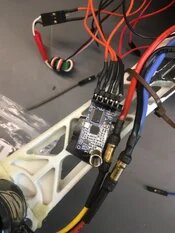

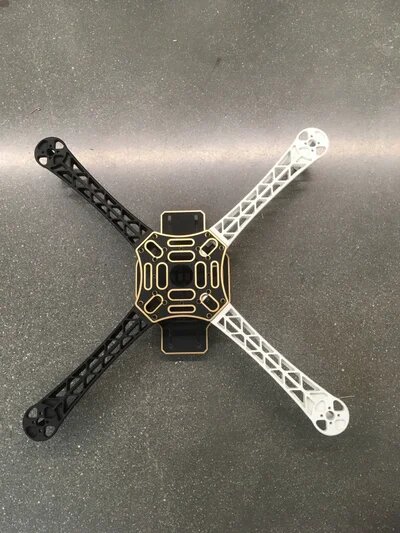
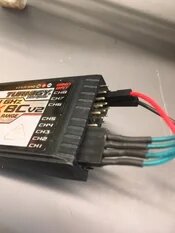
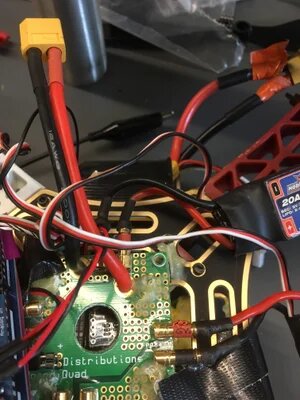
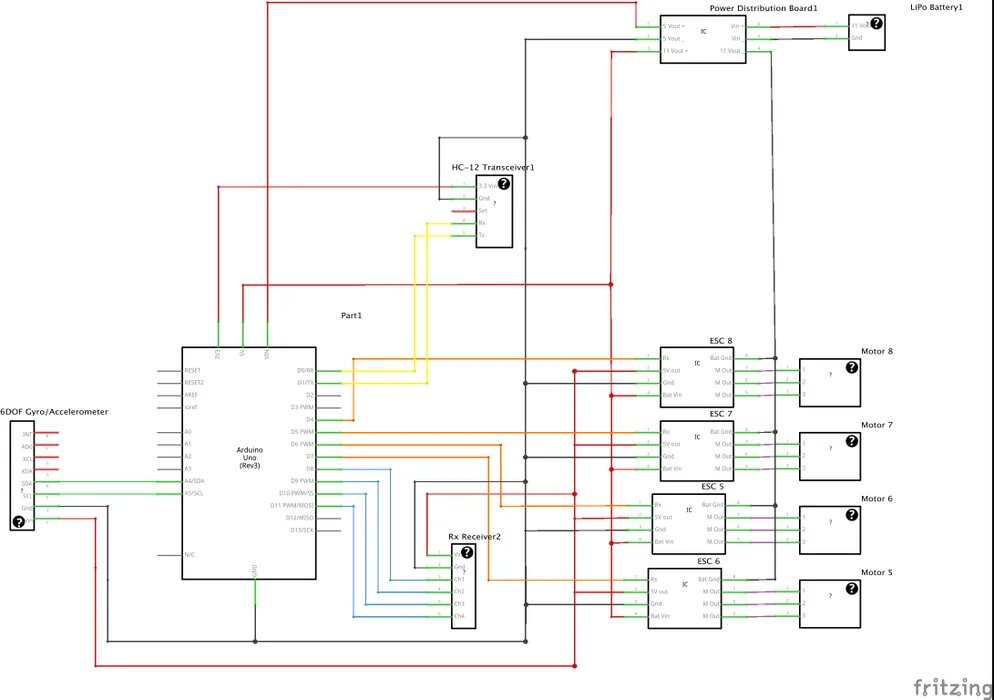




Comments
Please log in or sign up to comment.